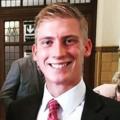Town and country folk alike joined together in turning Furness red, white and blue with jubilant excitement in June 1977, despite an outpouring of Britain’s truly traditional weather.
The Silver Jubilee celebrations caused the national emblem colours to be reflected in street bunting, on lamp standard, doors, windows and even spring lambs at Kirkby.
Barrow’s Mayor Cllr J. Brown and Mayoress Cllr Mrs J. Fleet, added to the occasion as they toured the town in civic regalia, receiving particularly warm receptions from dozens of flag-carrying children.
Lawrence Leech, who helped organise a street party at Meetings View, Barrow, said: “It couldn’t have gone better. It’s been perfect. We booked 186 children for tea, but when we counted them at the table there were 204.”
He added: “There were about 350 people here during the afternoon.”
Another street party due to be held in Marsh Street, Askam, had to be postponed due to the weather.
But the children were not disappointed, for they were treated to an afternoon at Barrow’s new cinema, the Astra Entertainment Centre, which had just opened. It was followed by a tea at Askam Rugby Club.
Joining the neighbourhood celebrations at St Mary’s Gap, Urswick, Mrs Barbara Evans who, in 1952, was the Urswick Coronation Queen.
At Arthur Street, Barrow, there was a reunion of men and women who were only children when the last street party for the Coronation had been held.
Ulverston Town Band had a busy Jubilee weekend, starting at Askam carnival then nearer home for the Jubilee and civic service in Ulverston Parish Church.
Abbot Hall Art Gallery, Kendal, organised a comprehensive display of silver. The exhibition was based on a selection of choice items made each reign between and including those of Elizabeth I and our Queen.
The one exception was a very rare and beautiful chalice dating from the reign of Henry VII.
Made of parcel gilt, it has a hexagonal foot with Christ on the Cross depicted in one panel.
Of particular local interest was the Ireby Cup, a chalice bearing the marks of Edward Dalton of Wigton 1565-70 and the so-called Carlisle assay office.













Comments: Our rules
We want our comments to be a lively and valuable part of our community - a place where readers can debate and engage with the most important local issues. The ability to comment on our stories is a privilege, not a right, however, and that privilege may be withdrawn if it is abused or misused.
Please report any comments that break our rules.
Read the rules here